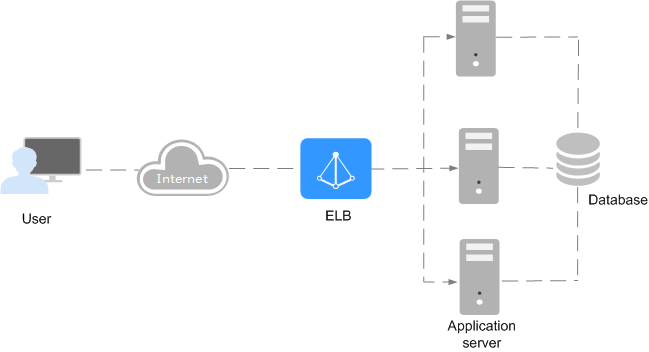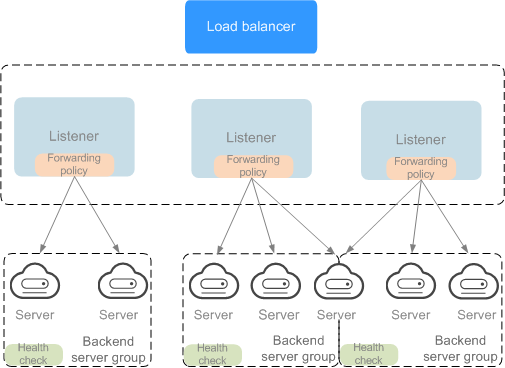What Is Elastic Load Balance?
Elastic Load Balance (ELB) automatically distributes incoming traffic across multiple backend servers based on the listening rules you configure. ELB expands the capacities of your applications and improves their availability by eliminating single points of failure (SPOFs).

Components
ELB consists of the following components:
- Load balancer: distributes incoming traffic across backend servers in one or more availability zones (AZs).
- Listener: uses the protocol and port you specify to check for requests from clients and route the requests to associated backend servers based on the listening rules you define. You can add one or more listeners to a load balancer.
- Backend server group: routes requests from the load balancer to one or more backend servers. At least one backend server must be added to a backend server group.
You can set a weight for each backend server based on their performance.
You can also configure health checks for a backend server group to check the health of each backend server. When the health check result of a backend server is Unhealthy, the load balancer automatically stops routing new requests to this server until it recovers.

Feedback
Was this page helpful?
Provide feedbackThank you very much for your feedback. We will continue working to improve the documentation.See the reply and handling status in My Cloud VOC.
For any further questions, feel free to contact us through the chatbot.
Chatbot





